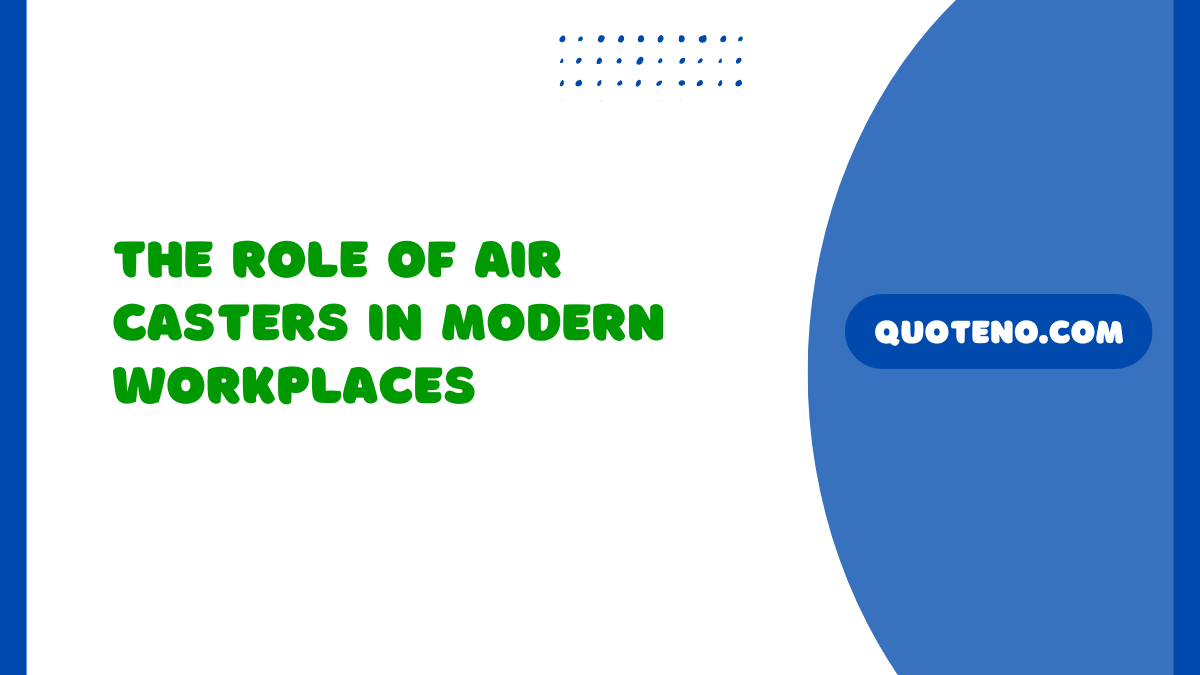In the ever-evolving landscape of industrial settings, efficiency and adaptability remain at the forefront of operational success. Modern workplaces demand quick, efficient movement of heavy equipment and materials to maintain productivity. As companies seek to improve their workflows, adopting innovative solutions like light duty shock absorber casters has become crucial. With their ability to effortlessly maneuver significant loads, these casters prove invaluable in environments where rapid change and high productivity are everyday norms.
Table of Contents
Understanding Air Casters: A Brief Overview
Air casters provide an alternative to traditional wheels and rollers found in many industrial scenarios. They work by utilizing a thin film of air to transport hefty objects, minimizing friction and effort. This unique feature allows for the controlled and efficient handling of equipment, significantly benefitting industries focusing on weight-sensitive material management. Unlike traditional wheel-based systems, air casters distribute weight more evenly, reducing floor damage and increasing maneuverability. Industries such as manufacturing, aerospace, and healthcare have already begun integrating these systems for their transformative impact on workflow.
Mechanisms of Function: How Air Casters Operate
The operation of air casters hinges on fundamental physics. By creating a smooth air cushion beneath a load, friction is virtually eliminated, enabling even the heaviest items to glide effortlessly across a given surface. This is particularly beneficial in situations where precision is essential, such as moving delicate machinery or aligning components. The science behind this involves using compressed air to lift the load slightly off the ground, creating a frictionless environment that facilitates easy movement with minimal force.
Advantages of Using Air Casters in Industries
The benefits of air casters extend far beyond the smooth transportation of goods. They help in dramatically reducing labor costs, as less force is required for moving heavy objects. This efficiency translates to fewer human resources needed for material handling tasks, allowing personnel to focus on other critical areas of operation. Moreover, air casters provide an advantage in environments where floors need to be protected from the typical wear and tear caused by conventional methods.
The ability to move massive loads without heavy equipment or powered vehicles lessens wear on flooring and lowers overall maintenance expenses. Enhancing both safety and operational efficiency, they rapidly become the preferred choice in various sectors aiming to streamline processes and maximize productivity.
Case Study: Real-Life Application of Air Casters
Consider, for instance, a large manufacturing plant where the use of air casters transformed their assembly line processes. Prior to adopting air casters, the plant faced challenges with frequent production halts due to machinery reconfiguration and maintenance. By implementing these casters, the plant could facilitate quicker shifts between configurations, allowing the manufacturing units to increase output without sacrificing quality.
This not only reduced downtime but also improved flexibility in scheduling production runs, enhancing the plant’s overall efficiency. Air casters thus proved to be a game-changer, reducing labor hours spent on moving equipment and improving turnaround times significantly.
Safety and Efficiency: Key Benefits of Air Casters
Safety in the workplace is paramount, and using air casters significantly contributes to a safer environment. The reduction in required manual force lowers the risk of muscle strain and injury among workers, which is crucial in promoting workplace health.
According to safety guidelines, minimizing physical exertion is a recommended practice for enhancing occupational safety. In addition, the smooth operation of air casters lessens the likelihood of load-dropping accidents, further protecting personnel and equipment from potential harm. This makes air casters a valuable tool in fostering a safer working environment while improving productivity and morale among teams.
Common Misconceptions About Air Casters
Despite their array of advantages, air casters are often misunderstood. A common misconception is that they are exclusively suited for extreme heavy-duty operations, neglecting their adaptability for lighter applications. In truth, air casters are versatile and cater to a wide spectrum of requirements, from small-scale laboratory settings to large industrial plants.
Another myth is the perceived complexity of their setup and operation, which, in actuality, is straightforward. Once the air supply is established, air casters are easy to use and require minimal maintenance compared to traditional wheeled systems.
Conclusion: The Future of Mobility Solutions
As industries continue to evolve, so too does the technology that supports them. Air casters represent just one of the innovative developments aimed at optimizing material handling processes. Their ability to increase efficiency, reduce costs, and enhance safety makes them a compelling choice for any forward-thinking enterprise.
Looking ahead, the widespread adoption of such technology could revolutionize how workplaces approach mobility solutions. As air casters continue gaining popularity, modern industrial environments are poised to benefit greatly, driving safety, efficiency, and adaptability into the future.
FAQs
What are air casters?
How do air casters work?
What are the advantages of using air casters?
On what surfaces can air casters be used?
Air casters are most effective on smooth, non-porous surfaces like sealed concrete, vinyl, or epoxy-coated floors. For uneven or porous surfaces, overlay materials such as sheet metal or plastic can be used to facilitate proper operation.
- Creative Ways to Make Camping Trips Fun for Everyone - November 7, 2025
- Benefits of Designing Energy-Efficient Homes - October 30, 2025
- Assessing the Reliability of Modern Library Resources for Engineers - October 28, 2025

